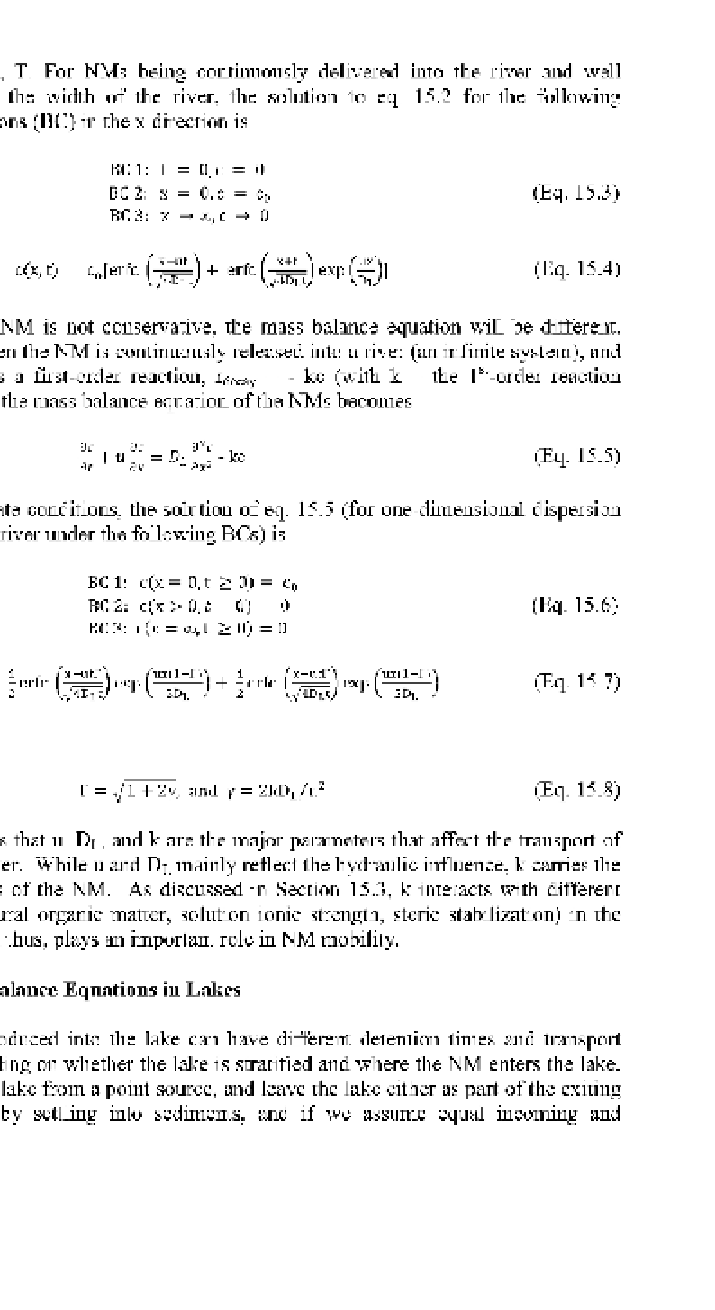Environmental Engineering Reference
In-Depth Information
L; and t = time, T. For NMs being continuously delivered into the river and well
dispersed across the width of the river, the solution to eq. 15.2 for the following
boundary conditions (BC) in the x direction is
BC1: t = 0,c = 0
BC2: x = 0,c = c
0
(Eq. 15.3)
BC3: x -» oo, c -» 0
c(x,t) = cjerfc ( ?"*" ) + erfc (
j^—}
exp (—)]
(Eq. 15.4)
However, if the NM is not conservative, the mass balance equation will be different.
For example, when the NM is continuously released into a river (an infinite system), and
its decay follows a first-order reaction, rd
ec
a
y
= - kc (with k = the l
st
-order reaction
coefficient, 1/T), the mass balance equation of the NMs becomes
d
2
c
,
/T^
1 c c\
dc
dc
—
\-u— = D
L
—j-kc
(Eq. 15.5)
At non-steady-state conditions, the solution of eq. 15.5 (for one-dimensional dispersion
of the NM in the river under the following BCs) is
BC 1: c(x= 0,t > 0) = C
0
BC2: c(x> 0,t = 0) = 0
(Eq. 15.6)
BCS: c(x = oo,t > 0) = 0
unizi2 +1 erfc ^ exp pi^
(Eq. 15.7)
V
H
>
H
V 2D
L
!
2
VV*5It/
V 2D
L
!
w
.„,,.,
T = ,/! + 2y, and y = 2kD
L
/u
2
(Eq. 15.8)
Eq. 15.7 indicates that u, DL, and k are the major parameters that affect the transport of
the NM in the river. While u and DL mainly reflect the hydraulic influence, k carries the
kinetic properties of the NM. As discussed in Section 15.3, k interacts with different
factors (e.g., natural organic matter, solution ionic strength, steric stabilization) in the
environment, and thus, plays an important role in NM mobility.
15.2.1.1
Mass
Balance Equations in Lakes
NMs introduced into the lake can have different detention times and transport
behaviors depending on whether the lake is stratified and where the NM enters the lake.
If NMs enter the lake from a point source, and leave the lake either as part of the exiting
stream flow or by settling into sediments, and if we assume equal incoming and

Search WWH ::

Custom Search